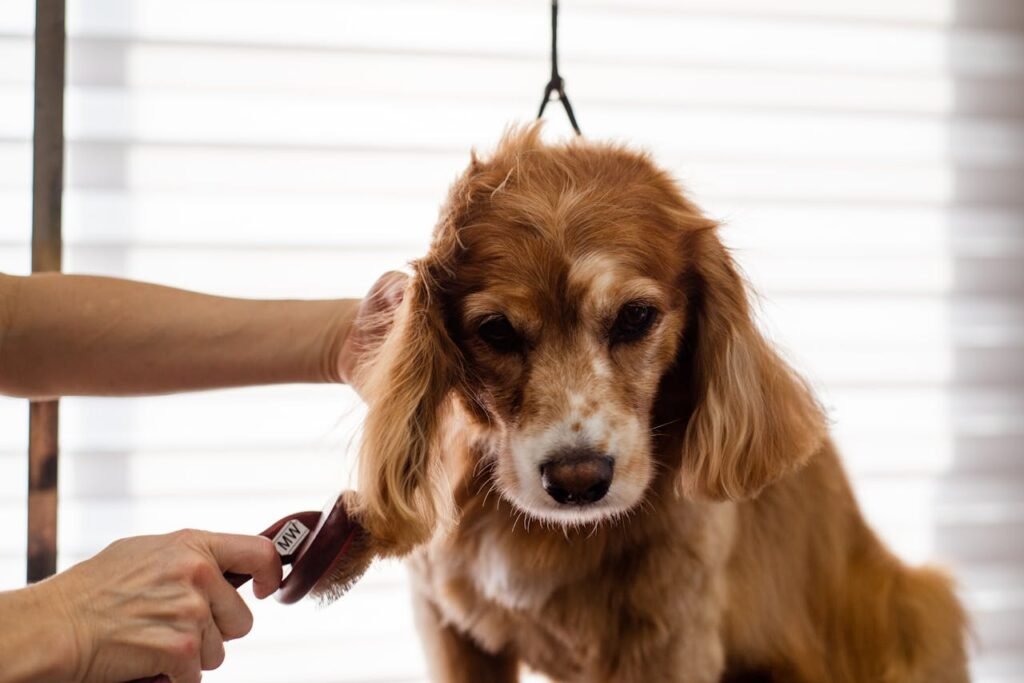7 Tips for Training Your Dog to Heel. Learn how To teach your dog To heel with these 7 simple & effective tips! Make walks enjoyable & maintaining control easy. Let’s train together!
7 Tips for Training Your Dog to Heel
Understanding Heel Command
Training a dog to heel establishes an essential communication method between pet and owner. When a dog understands this command. It allows for smoother. More enjoyable walks. Heel command ensures that dogs remain near their owners. Promoting safety in busy environments. Through consistent practice. Dogs will learn expectations associated with walking etiquette.
Implementing heel training can also create a stronger bond. This relationship fosters trust and respect between dog and handler. Many dog owners notice improved behavior during walks. Making outings more pleasant and fulfilling. Observing a dog walking calmly beside its owner exemplifies results of successful training.
During this process. Patience and persistence are vital. Each dog’s learning pace varies. Requiring owners to adapt techniques accordingly. Understanding behavioral cues can aid in recognizing when a dog grasps or struggles with training concepts.
Choosing Equipment Wisely
Proper equipment plays a key role in effective training. Selecting a comfortable collar or harness ensures dogs feel secure while learning. A wellfitted leash should provide enough slack for movement without allowing excessive wandering.
Many trainers recommend body harnesses. Which help distribute pressure evenly. This method minimizes choking and discomfort. Especially for enthusiastic dogs. A sturdy. Lightweight leash also assists in maintaining control without causing strain on either party during walks.
Experimenting with various tools may be necessary. Some dogs respond better to specific collars or harnesses. So observing reactions can guide owners towards suitable choices. Prioritizing comfort and control will aid in establishing a positive training environment.
Establishing a Positive Training Environment
A conducive training environment significantly impacts effectiveness. Removing distractions. Such as other pets or loud noises. Creates an ideal setting for learning. This control aids in ensuring dogs remain focused on commands and rewards.
Incorporating short training sessions can enhance learning experiences. Frequent. Brief sessions maintain dogs’ attention and enthusiasm. Preventing boredom from longer durations. Aim for 510 minutes per session. Gradually increasing as dogs become more responsive.
Rewards should also play a vital role in motivating pets. Using treats. Praise. Or playtime helps reinforce desired behaviors. Celebrating small victories encourages continued effort and fosters enjoyment during training.
Consistent Cue Usage
Consistent cues are crucial for effective communication. Owners should choose a command word or phrase. Such as “heel” or “close,” and stick with it throughout training. This consistency helps dogs associate specific sounds with actions.
Differences in tone can also influence comprehension. So maintaining a clear. Calm voice ensures dogs understand expectations. Positive reinforcement further solidifies connections between commands and desired behaviors.
Using visual cues alongside verbal commands can enhance understanding. Gestures offer additional context. Making it easier for pets to grasp what’s required. Combining verbal pads with physical motions provides multilayered communication that many dogs respond well to.
Utilizing Positive Reinforcement
Positive reinforcement proves effective in animal training. Particularly with heel command. Recognizing when dogs successfully follow commands allows owners to reward through treats. Praise. Or a favorite toy. This approach cultivates a sense of accomplishment for pets. Reinforcing desired behaviors.
Immediate rewards are essential. Recognizing good behavior quickly ensures connections remain strong between actions and rewards. Enhancing learning speed. Gradually rewarding over time encourages dogs to maintain desired positions without immediate reinforcement.
For additional resources. Considering videos can provide more insight on proper techniques. You can explore this informative video for practical examples: Training Your Dog to Heel. Experimenting with various treats can also add excitement to training sessions.
Introducing Distractions Gradually
Once dogs master basic heel commands. Gradually introducing distractions becomes vital. This technique helps pets learn behavior expectations in more dynamic environments. Maintaining focus amidst distractions challenges dogs. Further reinforcing training.
Start by practicing in quiet. Controlled areas before slowly increasing complexity. This stepwise approach prepares dogs for reallife scenarios. Enabling them to maintain focus during walks. Patience remains essential. As dogs may take time acclimatizing to new situations.
Offering rewards as distractions amplify helps guide dogs back towards desired behaviors. Ensuring consistent tone helps animals discern when behavior requires adjustment. Each successful response reinforces positive associations. Further solidifying training achievements.
Practicing Patience and Persistence
Patience stands as a key virtue during dog training. Each training session may yield different results. Urging owners to remain calm and encouraging. Dogs may exhibit unpredictable behaviors. So embracing moments of frustration as part of the journey is essential.
Setting realistic goals keeps training on track. Recognizing each small accomplishment builds confidence. Fostering a positive mindset for both dogs and owners. Avoiding excessive pressure promotes an enjoyable experience. Ensuring training remains a pleasant endeavor.
Persistence fosters longterm success. Regular practice reinforces learned behaviors. Helping pets retain skills over time. Even on challenging days. Maintaining dedication ensures steady progress towards mastering heel commands.
Feature List
- 🐶 Essential command understanding
- 📏 Proper equipment selection
- ✅ Positive training environment
- 🎉 Consistent cue usage
- 🍖 Positive reinforcement techniques
- 🚶 Introducing distractions gradually
- 💪 Practicing patience and persistence
Comparing Techniques
| Technique | Advantages | Disadvantages |
|---|---|---|
| Positive Reinforcement | Creates strong associations 🎉 | Requires consistent application |
| Visual Cues | Enhances understanding 👀 | May confuse some dogs |
| Gradual Distraction Introduction | Prepares for reallife scenarios🚶 | Requires patience and time |
| Comfortable Equipment | Improves comfort and focus 😊 | Can be costly |
Final Thoughts
Training a dog to heel involves understanding techniques. Utilizing appropriate tools. And applying consistent methods. Each tip serves a purpose in establishing a strong bond between pets and their owners. Through patience. Dedication. And the right approach. Canine companions can learn essential skills needed for enjoyable outings.
For more tips and resources. Consider visiting Haven for Pet Care. Training should always remain a positive experience. Fostering joy and connection between dogs and their handlers.
Learn how To teach your dog To heel with these 7 simple & effective tips! Make walks enjoyable & maintaining control easy. Let’s train together!

What is The first step To teach my dog To heel?
The first step in teaching your dog To heel is To ensure you have their attention. Start by using treats or their favorite toy To engage them. Once you have their focus. Begin walking with your dog at your side. Consistently rewarding them for staying close.
How do I correct my dog if they pull ahead?
If your dog pulls ahead while on a walk. Gently stop walking & call them back To your side. Use a command like “heel” & praise them when they return To The correct position. It’s important To remain patient & consistent with corrections. Rewarding them for good behavior.
How long should I practice heeling with my dog each day?
It’s best To practice heeling with your dog in short. Frequent sessions. Aim for about 5 To 10 minutes each day. As shorter sessions can maintain their interest & focus. Gradually increase The duration & difficulty as they improve & become more comfortable with The command.
Conclusion
Training your dog To heel can transform your walks into a more enjoyable experience. By using The seven tips outlined in this article—like using treats. Being consistent, & practicing regularly—you’ll foster a strong bond with your furry friend while teaching them good manners. Remember. Patience is key! Every dog learns at their own pace. So celebrate The small victories along The way. With time & practice. Your dog will master The heel command. Making outings safer & more fun for both of you. Happy training, & enjoy The journey with your loyal companion!


